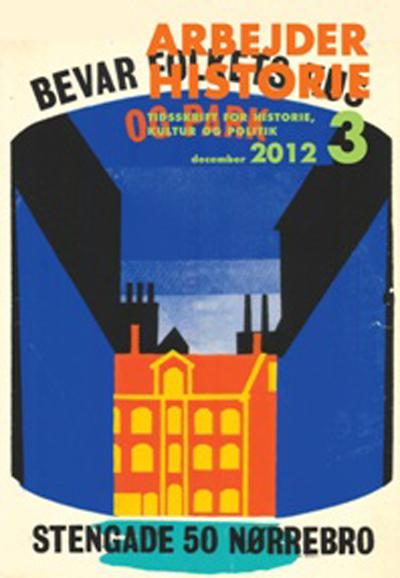Byplanlægning i Kaliningrad og udviklingen af en national sovjetisk identitet
DOI:
https://doi.org/10.7146/arbejderhistorie.vi3.145020Resumé
Eva Duberg Nielsen: Urban Planning in Kaliningrad – Developing National Soviet Identity. Arbejderhistorie 3/2012, pp. 19-32.
The Kaliningrad region was not a part of the Soviet Union until 1945 where this Northern part of the former Eastern Prussia with its
main city Königsberg was incorporated into the Soviet Union. The area was given military status and used by the Red Army as a sluice to transport former concentration camp prisoners, soldiers, and war material back to the Soviet Union. It was in this environment in a
city, which had been reduced to ruins by British air raids in 1944, that a new Soviet city was to be formed not only physically but also
ideologically. In this article I analyze the ideological construction of Kaliningrad and what this meant for the citizens of the city. I examine which plans the rulers had for the future of Kaliningrad in the sense that the city was to be built ideologically correct and the population of the city given an identity as ideologically correct Soviet human beings. In the examination of Kaliningrad this process is showed through the execution of the plans to build and frame the city. In this process architecture played a key role and became a defining factor in the construction of an identity for the population in Kaliningrad. With time, however, these plans changed and
so did the silhouette of the city from the neoclassicism of late-Stalinism to the squared functionality of the 1960’s and 1970’s. For
the architects the overall ambition was to build a city for people to live in. With the change in political discourse in the post-Stalin years, they were able to express these visions in public which lead to many discussions between town architects, Soviet rulers, and the rulers of Kaliningrad. In this way the dynamic of a national Soviet identity developed in time, but in the end the city rulers took the decision to put forward the building up of a city, and an identity, that was distinguished Soviet without the traces of a Prussian past. Today Kaliningrad is an example of the general development of the Soviet Union and to this day the city is still left behind in the Soviet past as a symbol of the identity of the people that live at the uttermost Western border of the Russian Federation.
Downloads
Publiceret
Citation/Eksport
Nummer
Sektion
Licens
Copyright (c) 2012 SFAH og forfatterne

Dette værk er under følgende licens Creative Commons Navngivelse – Ikke-kommerciel – Ingen Bearbejdede Værker (by-nc-nd).


